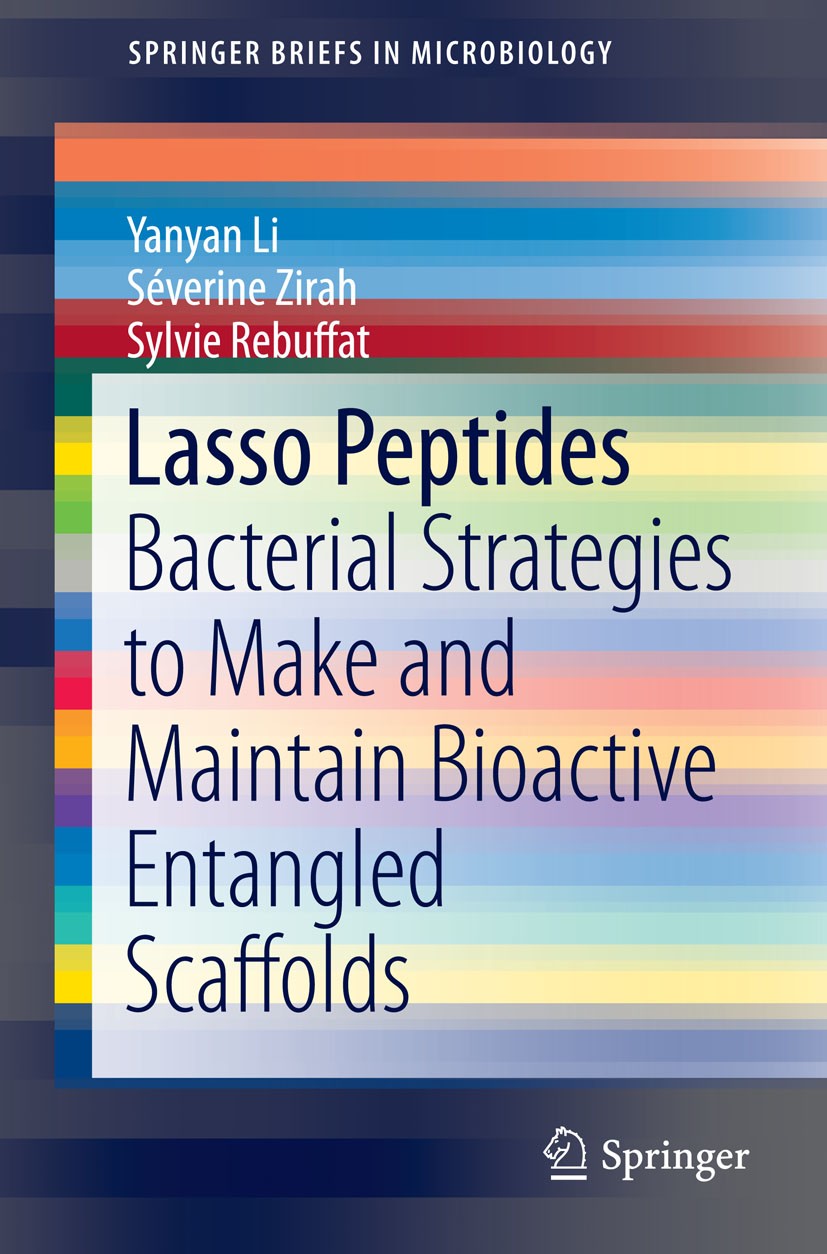| 书目名称 | Lasso Peptides |
| 副标题 | Bacterial Strategies |
| 编辑 | Yanyan Li,Séverine Zirah,Sylvie Rebuffat |
| 视频video | http://file.papertrans.cn/582/581743/581743.mp4 |
| 概述 | Expanding field of research.Focus on lasso peptides.Explores the therapeutic uses of lasso peptides.Includes supplementary material: |
| 丛书名称 | SpringerBriefs in Microbiology |
| 图书封面 |  |
| 描述 | .Lasso peptides form a growing family of fascinating ribosomally-synthesized and post-translationally modified peptides produced by bacteria. They contain 15 to 24 residues and share a unique interlocked topology that involves an N-terminal 7 to 9-residue macrolactam ring where the C-terminal tail is threaded and irreversibly trapped. The ring results from the condensation of the N-terminal amino group with a side-chain carboxylate of a glutamate at position 8 or 9, or an aspartate at position 7, 8 or 9. The trapping of the tail involves bulky amino acids located in the tail below and above the ring and/or disulfide bridges connecting the ring and the tail. Lasso peptides are subdivided into three subtypes depending on the absence (class II) or presence of one (class III) or two (class I) disulfide bridges. The lasso topology results in highly compact structures that give to lasso peptides an extraordinary stability towards both protease degradation and denaturing conditions. Lasso peptides are generally receptor antagonists, enzyme inhibitors and/or antibacterial or antiviral (anti-HIV) agents. The lasso scaffold and the associated biological activities shown by lasso peptides on |
| 出版日期 | Book 2015 |
| 关键词 | Actinobacteria; Lasso peptides; Proteobacteria; antimicrobial; receptor antagonists; vaccines |
| 版次 | 1 |
| doi | https://doi.org/10.1007/978-1-4939-1010-6 |
| isbn_softcover | 978-1-4939-1009-0 |
| isbn_ebook | 978-1-4939-1010-6Series ISSN 2191-5385 Series E-ISSN 2191-5393 |
| issn_series | 2191-5385 |
| copyright | Yanyan Li, Séverine Zirah and Sylvie Rebuffat 2015 |
 |Archiver|手机版|小黑屋|
派博传思国际
( 京公网安备110108008328)
GMT+8, 2025-11-11 19:20
|Archiver|手机版|小黑屋|
派博传思国际
( 京公网安备110108008328)
GMT+8, 2025-11-11 19:20


